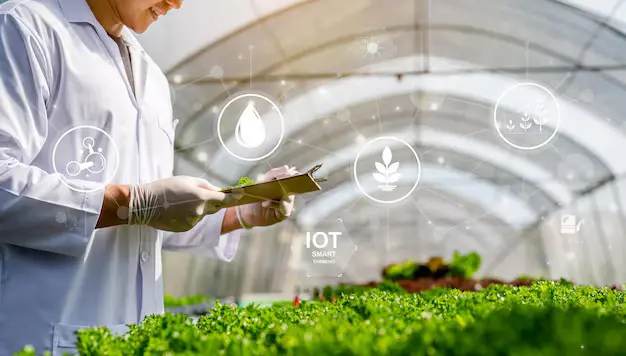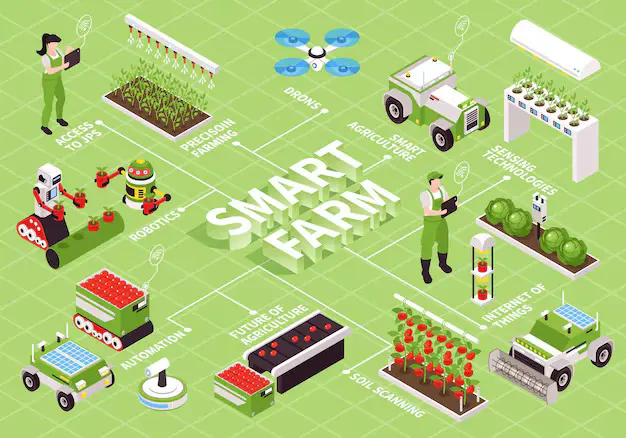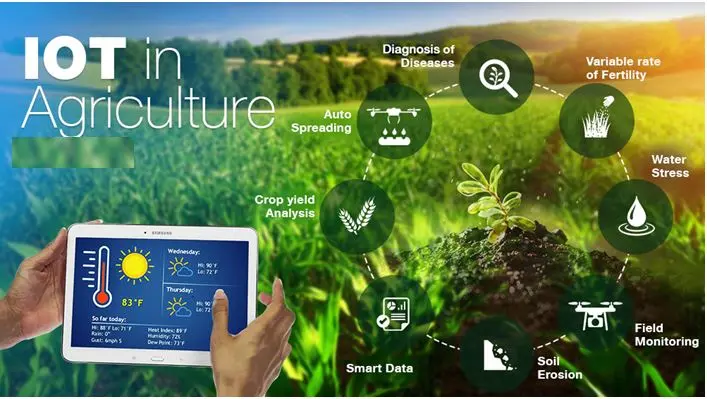Smart Farming Explained: How AI, IoT & Data Are Transforming Agriculture in 2025

Smart Farming: Revolutionizing Agriculture with Technology
Farming isn't just about soil and sunlight anymore — it's about sensors, satellites, and smart decisions. Welcome to the era of smart farming, where cutting-edge technology meets age-old agriculture. From AI-powered crop monitoring to IoT-driven irrigation systems, modern farms are becoming more precise, productive, and sustainable than ever before. In this guide, we’ll unpack how smart farming works, the real tools farmers are using today, and why this revolution isn’t just for big agriculture — it’s for everyone.

The agricultural sector is undergoing a digital revolution, and Smart Farming is at the forefront. By integrating IoT, AI, drones, and big data analytics, farmers cannow optimize yields, reduce waste, and make data-driven decisions. If you're looking to understand how precision agriculture, automated farming, and sustainable practices are reshaping food production, this guide covers everything—from benefits to real-world applications
1. What is Smart Farming?
Smart farming, also known as precision agriculture, involves using advanced technologies like IoT, AI, drones, and data analytics to optimize every aspect of farming. It allows farmers to make data-driven decisions that improve efficiency, yield, and sustainability. This modern method is quickly replacing traditional techniques with smarter, more connected systems.
2. Core Technologies Behind Smart Farming
Internet of Things (IoT): IoT sensors are used to monitor soil moisture, temperature, humidity, and crop health. They send real-time data to mobile apps or control systems.
Artificial Intelligence (AI): AI helps analyze farm data, predict crop diseases, suggest optimal planting times, and guide resource usage.
Drones and GPS: Drones provide aerial imaging for crop health monitoring. GPS systems enable automated tractors to perform tasks with high precision.
Cloud Computing and Big Data: Farm data is stored and analyzed in the cloud, providing dashboards that help track performance and plan improvements.
3. Real-World Applications of Smart Farming
- Smart Irrigation: Using sensors and AI to automate watering schedules based on real-time soil and weather conditions.
- Livestock Monitoring: Wearable sensors track animal health, location, and activity levels.
- Automated Machinery: GPS-enabled tractors and harvesters reduce manual labor and increase productivity.
- Crop Health Drones: Drones identify pests, diseases, and nutrient deficiencies with aerial thermal imaging.
- Greenhouse Automation: Systems that automatically adjust temperature, light, and CO2 levels for optimal growth.
4. Benefits of Smart Farming
- Increased Yields: More accurate planting and resource use leads to higher productivity.
- Resource Efficiency: Water, fertilizer, and pesticides are used only when and where needed.
- Reduced Costs: Less waste and optimized labor reduce overall farming expenses.
- Real-Time Decision-Making: Farmers make better choices based on real data.
- Environmental Sustainability: Reduced chemical use and smarter land use lower environmental impact.
5. Smart Farming for Small-Scale and Rural Farmers
Smart farming isn't just for big corporate farms. Affordable tech solutions are making it easier for small and rural farmers to join the movement:
- Mobile-based irrigation systems
- Low-cost soil sensors
- Government grants and NGO support
- Community training programs on digital tools
6. Sustainability & Environmental Impact
Smart farming contributes significantly to sustainable agriculture:
- Water Conservation: Automated systems prevent over-irrigation.
- Chemical Reduction: Precision spraying reduces pesticide runoff.
- Soil Health: Data on soil conditions supports better crop rotation and land use.
- Carbon Footprint: Reduced fuel use from automation and less resource waste.
7. Challenges and Barriers to Adoption
- High Initial Investment: Equipment and infrastructure can be expensive.
- Connectivity Issues: Rural areas may lack internet or mobile coverage.
- Digital Literacy: Farmers need training to use new tech effectively.
- Data Security: Concerns about ownership and privacy of farm data.
8. The Future of Smart Farming: What to Expect
- Blockchain Integration: Enhancing traceability from farm to fork.
- Advanced Robotics: AI-powered robots for planting, weeding, and harvesting.
- Climate Models: Predictive models for extreme weather events.
- Global AgriTech Growth: More innovation from startups and investments in smart solutions.

Challenges & Future of Smart Farming
While smart farming offers immense potential, barriers like high initial costs, lack of rural internet connectivity, and farmer training need addressing. However, as tech becomes more affordable, adoption will rise, making farming smarter, greener, and more profitable.